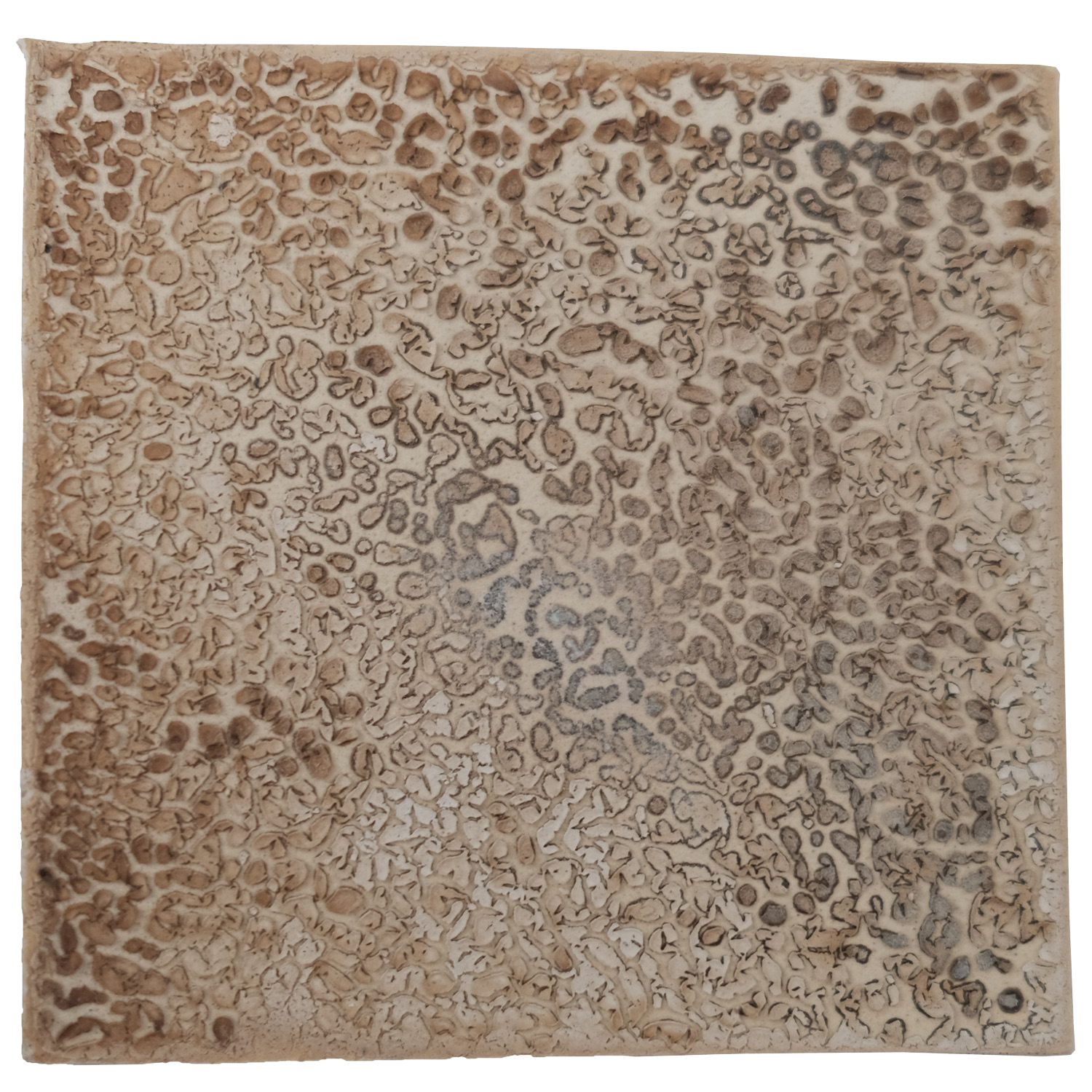Batch No.9
Rock Description= Light in weight, chalky, and powdered. Upon collection the rocks are white, with no noticeable undertone or colorant. Undetermined impurities colour the rocks. Sedimentary rock with an undetermined rock sub-category.
Preliminary Fire Temperature= 955 C
Mill Time= 3 hours
Water Weight= 750.00g
Particulate Weight= 580.00g
Post-mill Protocol= 100 mesh, after sieve removed a significant amount of water leaving the slip thicker.
Material Behaviours= Following the ^06 preliminary firing, the particulate turned to powder without much force—becoming, turning into, rubble shortly and quickly. The slip is an off grey-white, and the particulate seldom settles in any significant way. Very little agitation needed to regain workability and the slip remains always inspissated.
^5 Fire Results= There is spontaneous and significant crawling that has occurred in this firing. The manner in which this crawling of the dry particulate presents on the surface is harsh, angular, and lifting dramatically from the tile.
^10 Fire Results= From the results, an estimation of the silica proportion is moderate. Changing from dry to glassy between the temperatures, the particulate now presents with a pinholed surface.
^5 Surface Description= At this temperature the surface is irregularly coloured in varying shades of brown. From eggshell to charred, the colour scale is erratic and foggy throughout the crawled tile.
^10 Surface Description= At this high temperature, the colour fades to a light brown and the strong ice-white appears where the particulate pools. This faint blue colour is spontaneous and does not appear at any other stage of the processing.
ID 15:
[The surface is stable, and its porosity is intact, but the particulate appears to be unmoored and crawls. This robust crazing occurs throughout the gradient from ivory to a deep brown colour on the ceramic square tile. There is no pattern to the angular crawl and it occurs spontaneously but within a tight action; each free-standing craze nodule is the same relative size as the next. The surface translates on the picture plane the raised quality of the particulate, lifting up from the below ceramic material enough to catch a tracing finger or another passing object.]

ID 16:
[The vitrified particulate pools across the square sand and ivory tile’s surface. Where the particulate is thin, the granularity is gray, brown, and sand, and where the particulate is thick it is a coagulated ice-gray. In the foreground, the semi-matte surface gestures to itself subtly across the tile, and in finely dunted piles the particulate creates a surface that is distinct in texture, colour, and finish. In the background, the particulate appears as the hull of a wheat does, with a tan colour smattered throughout.]
